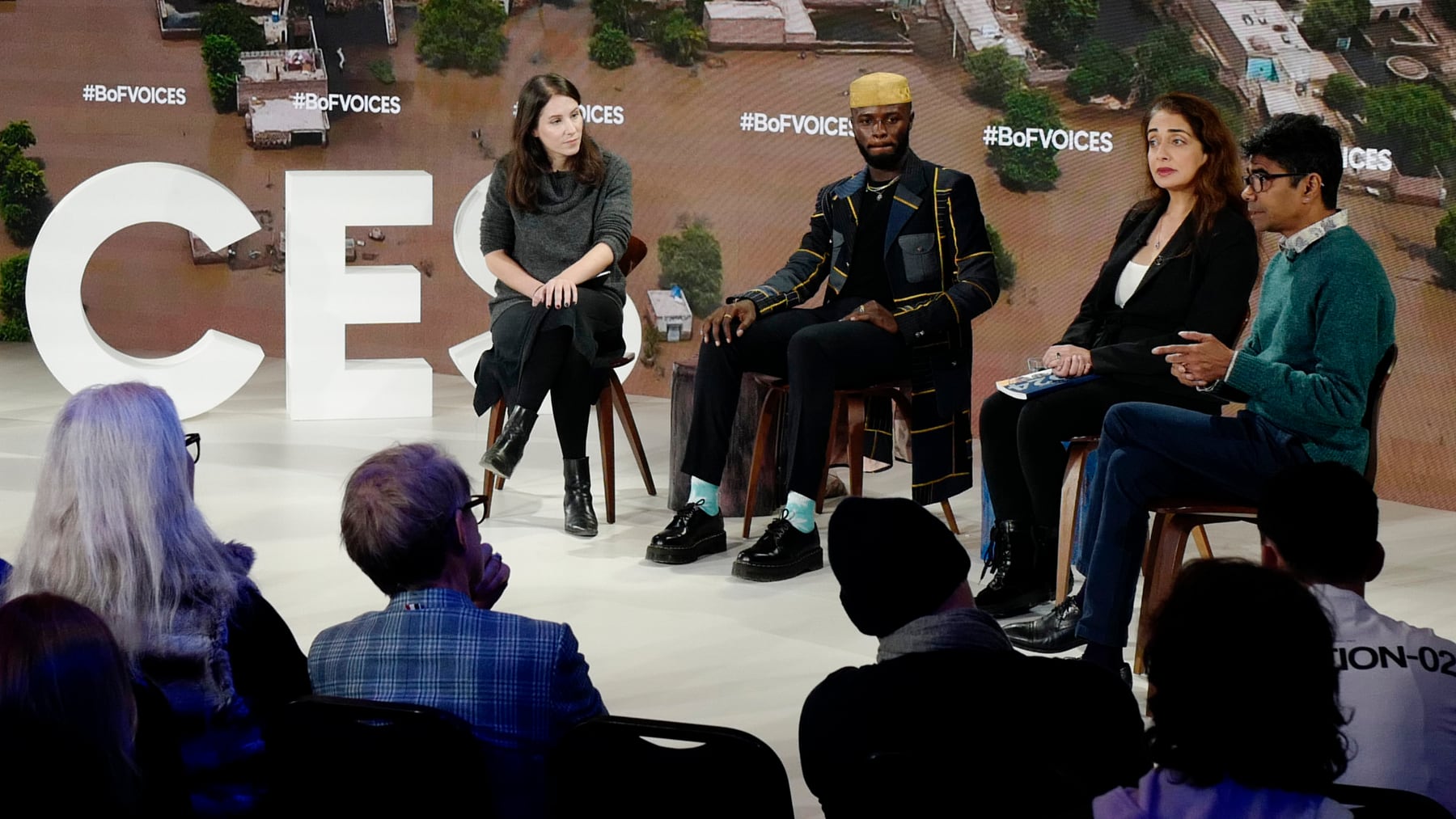
The author has shared a Podcast.You will need to accept and consent to the use of cookies and similar technologies by our third-party partners (including: YouTube, Instagram or Twitter), in order to view embedded content in this article and others you may visit in future.
Subscribe to the BoF Podcast here.
Background:
The fashion industry is responsible for up to 8 percent of global greenhouse gas emissions. But the most profitable fashion companies are often headquartered in the countries that have historically generated more emissions, while the nations with a smaller carbon footprint often find themselves more severely impacted by extreme weather driven by the climate crisis.
“The industry is structured in a way that’s very colonial … it’s the rich countries that are reaping all the rewards and benefits, and it’s the poor countries that have kept this industry profitable,” says Ayesha Barenblat, the founder and CEO of Remake, a non-profit that advocates for sustainable practices in the fashion industry.
This week on The BoF Podcast, BoF chief sustainability correspondent Sarah Kent sits down with Barenblat, sustainable fashion designer Sammy Oteng and Vidhura Ralapanawe, executive vice president at manufacturing company Epic Group at BoF VOICES 2023 to discuss how to end climate colonialism in the fashion industry.
The author has shared a YouTube video.You will need to accept and consent to the use of cookies and similar technologies by our third-party partners (including: YouTube, Instagram or Twitter), in order to view embedded content in this article and others you may visit in future.
Key Insights:
- In fashion, the climate crisis appears in colonial structures that perpetuate unequal distributions of power and profit. According to Barenblat, companies act as “glorified marketeers, telling production nations how to deal with the climate crisis. They’re setting science-based targets, but they’re not paying for it … let’s flip the script and actually have a conversation around the people who create value for this industry and how we centre them in the conversation.”
- Countries in the global South have become dumping grounds for low-quality clothes from the global North. An estimated 40 percent of the textiles that arrive in Ghana are discarded as waste, however the true scale of excess garments is unknown. “We don’t even know how much we are producing in terms of fashion. We say 100 billion to 150 billion [garments produced each year], that’s a 50 billion gap,” explains Oteng. “Until we understand a problem that we have, we can’t move on to having … that one solution.”
- Alongside climate mitigation, it is important to also address climate adaptation. “Every brand and retailer wants to talk about mitigation because they want to make money off the climate crisis, but our communities need climate adaptation resources,” says Barenblat, adding that philanthropic contributions are not enough. “What we want are equitable ways to make these communities whole … we can’t just sit around and have conversations anymore.”
- The fashion industry needs to halve its emissions by 2030 to meet global climate goals, a timeline that is already unrealistic. As Ralapanawe says, “We haven’t even started. There’s no way that any brand or any manufacturer will hit their 2030 targets now.”



